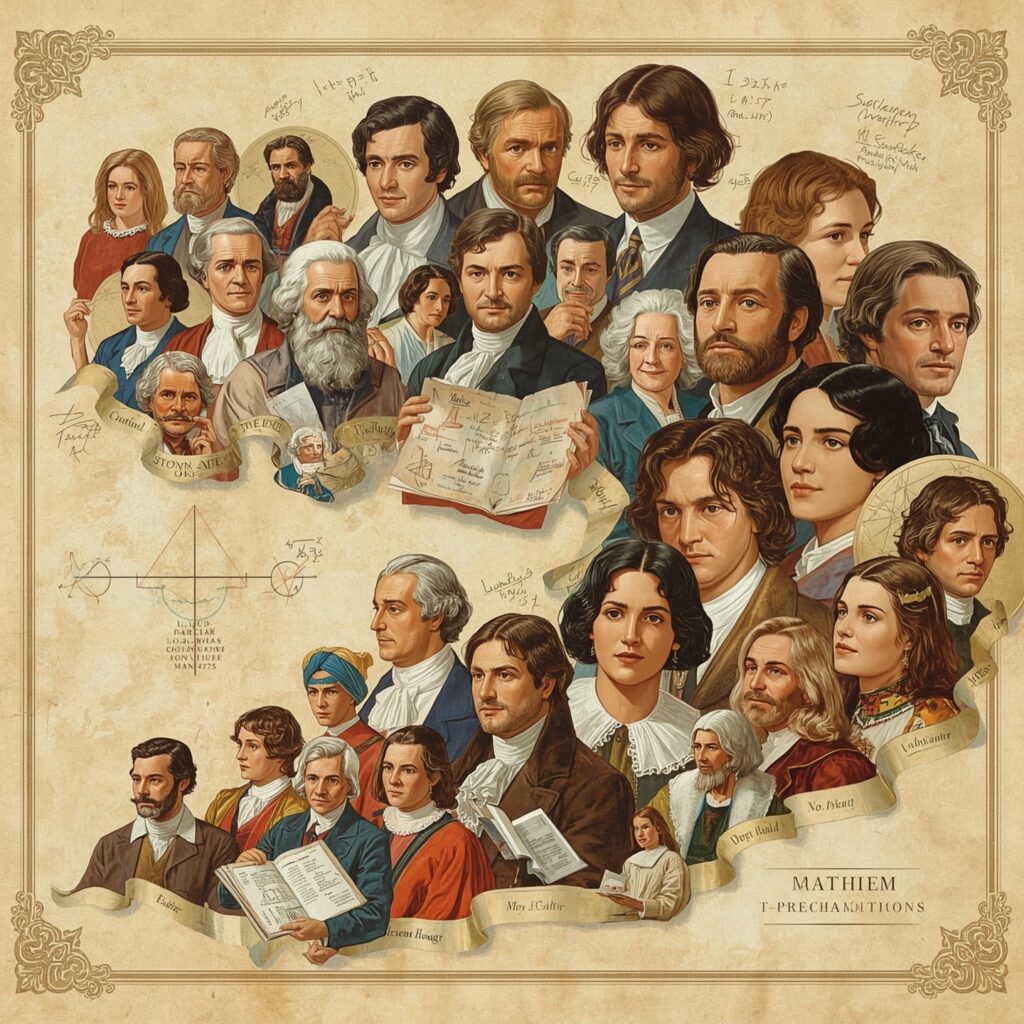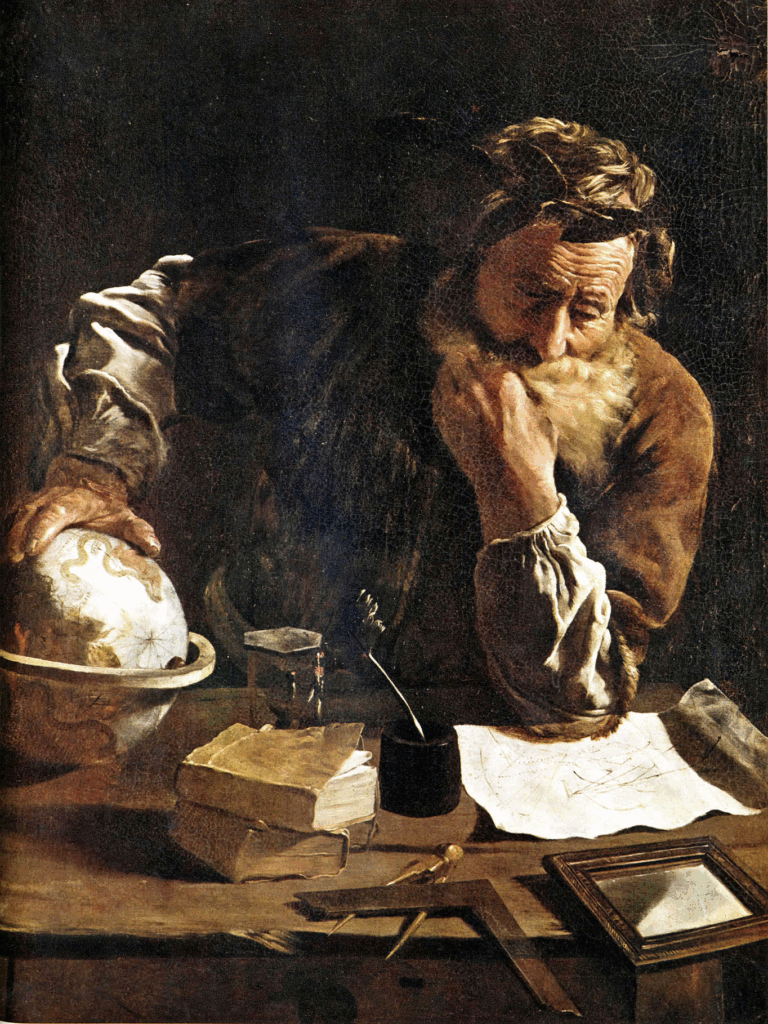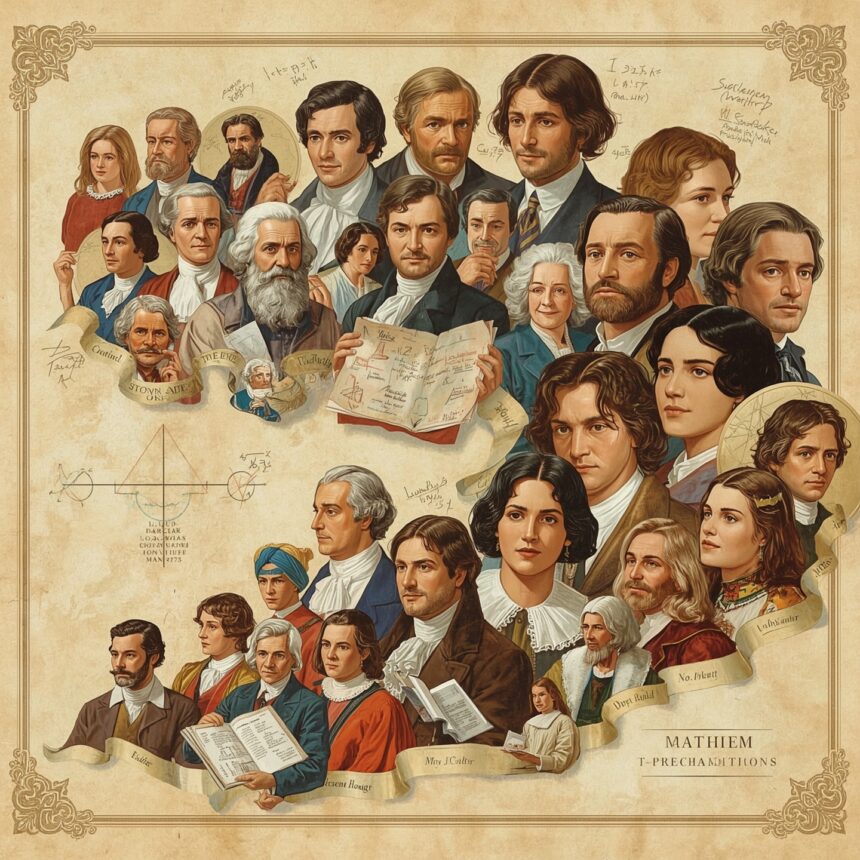In this article, I will discuss the History of Famous Mathematicians and see what each one added to math.
Beginning with early thinkers such as Euclid and Aryabhata and reaching the modern era with Ramanujan and Turing, these people moved math forward over many hundreds of years. The ideas they uncovered still power science, drive technology, and help us make sense of the universe around us.
Overview
The history of math reads like a long story filled with curiosity, creativity, and hard work. From early number-crunching tribes to today’s smartphone calculators, thinkers in many cultures have built on each others ideas.
These pioneers didn’t just push numbers forward; they helped science, engineering, business, and even philosophy move ahead, too. In the sections that follow, we’ll meet some of the best-known mathematicians, see what they did, and learn why their work still matters in our daily lives.
History of Famous Mathematicians

Euclid – The Father of Geometry
Euclid was a Greek math whiz who lived around 300 BCE, and he is best remembered for his book Elements. This huge collection brings together almost all the math known back then, and it formed the backbone of geometry for hundreds of years.
By proving ideas step by step, Euclid showed teachers everywhere how to use clear, logical reasoning in math class. Because of that style, students learned, argued, and built from his pages for more than two thousand years. Even now architects, engineers, and computer coders still lean on Euclid when they work.
Archimedes – Mathematical Genius of the Ancient World

Archimedes of Syracuse (around 287 BCE – 212 BCE) was a brilliant thinker who wore many hats-mathematician, physicist, and inventor. He pushed the needle forward in geometry, early calculus, and the study of how forces work.
The famous “Eureka!” moment credited to him came when he explained why ships float, a concept we now call the principle of buoyancy. He also worked out the value of pi far more accurately than anyone before him and laid early groundwork for what we’d later call integral calculus. From clever war machines that defended his home city to simple tools for measuring volume, Archimedes showed how math could solve real-life problems.
Aryabhata – Pioneer of Indian Mathematics
Aryabhata (476-550 CE) was an early Indian math whiz and stargazer who pushed ancient numbers and sky-watching forward. In his best-known book, the Aryabhatiya, he talked about place value, the idea of zero, and gave us early trigonometry. He worked out pi as about 3.1416 and boldly suggested that Earth spins on its own-a serious head-turner back then.
He also sketched ways to solve quadratic problems and to find where planets should be in the sky. Because of these ideas, later Indian, Islamic, and even European mathematicians looked to him, making Aryabhata a true cornerstone of math history worldwide.
Al-Khwarizmi – Father of Algebra

Muhammad ibn Musa al-Khwarizmi (around 780–850 CE), a Persian math whiz, is often called the father of algebra. In his book, Al-Kitab al-Mukhtasar fi Hisab al-Jabr wal-Muqabala, he laid out clear steps for solving linear and quadratic equations, and that’s where the word “algebra” comes from.
His name also inspired the word “algorithm,” a term programmers now use every day. When his work was translated into Latin in the 1100s, it helped carry ancient math ideas straight into the modern world.
Isaac Newton – The Architect of Calculus

Isaac Newton (1643-1727) still gets named whenever people talk about game-changing scientists. He helped invent calculus and also figured out most of the rules that now sit under classical mechanics. In his big book, Philosophiæ Naturalis Principia Mathematica, he laid out the laws of motion along with universal gravitation, giving physics its first sturdy backbone.
To tackle questions about moving objects, he cooked up his fluxions method-a rough early version of calculus-and started leaving precise marks on astronomy, engineering, and beyond. Because of those fresh tools, folks could finally make better predictions, whether launching a cannonball or charting a planet.
Gottfried Wilhelm Leibniz – Co-Inventor of Calculus
Gottfried Wilhelm Leibniz (1646–1716) was a German mathematician and philosopher who, working on his own, came up with calculus at almost the same time as Isaac Newton. His symbols-the curled integral sign (∫) and the tiny “d” that shows differentials-still show up in every math class today.
Leibniz saw calculus as a tidy written language that could strip away clutter and make tricky questions about change or motion much easier to handle. He also played with early ideas about the binary system, logic, and computing, seeds that later helped grow the modern computer. Even though he fought publically with Newton over who got there first, Leibnizs clear symbols and wide outlook on math shaped science and logic for centuries to come.
Carl Friedrich Gauss – The Prince of Mathematicians

Carl Friedrich Gauss (1777-1855), often called the Prince of Mathematicians, left an unmistakable mark on fields from number theory and statistics to astronomy and pure analysis.
His landmark book, Disquisitiones Arithmeticae, essentially created modern number theory by introducing ideas like modular arithmetic and the law of quadratic reciprocity. In statistics he refined the method of least squares, and the so-called Gaussian distribution still helps scientists make sense of random data.
His work with complex numbers, geodesy, and even Earth’s magnetism shows how widely he applied his insights. A child prodigy, Gauss spotted patterns in numbers by age seven, and the same precision, depth, and versatility turned him into a legend whose name still headlines countless formulas and theorems today.
Ada Lovelace – The First Computer Programmer
Ada Lovelace (1815-1852) was the only legitimate child of the famous romantic poet Lord Byron, yet her own genius quickly outgrew that family fame. Often called the first computer programmer, Lovelace worked closely with inventor Charles Babbage on his ambitious, unfinished Analytical Engine, a massive mechanical contraption intended to carry out any math task.
While curating Babbages notes, she wrote detailed explanations and even jotted down steps for a specific calculation of Bernoulli numbers; those instructions now count as the worlds earliest published computer program.
Beyond mere numbers, Lovelace imagined thinking machines that could shuffle symbols, weave patterns, and maybe even compose a tune. Her bold thoughts built the foundation for today’s computers and still inspire coders, engineers, and dreamers everywhere.
Srinivasa Ramanujan – The Self-Taught Genius

Srinivasa Ramanujan (1887-1920) was a brilliant Indian mathematician who learned the craft almost entirely on his own, and his feel for numbers amazed even the toughest experts. Without formal schooling, he still stumbled upon fresh ideas in number theory, infinite series, and continued fractions.
When he linked up with Britisher G.H. Hardy at Cam-bridge, they published trail-blazing papers, including the famous Ramanujan-Hardy formula and the mysterious mock theta functions. Many of his theorems were so advanced they still light a fire in todays research on string theory and modular forms. Driven by pure intuition and deep faith, Ramanujans short life left a mark many scholars still marvel at.
Alan Turing – The Father of Modern Computing
Alan Turing (1912–1954) was a British mathematician and code-breaker who is often called the father of modern computers. He came up with the idea of the Turing Machine, a simple thought experiment that helps explain how all computers process information today.
During World War II, Turing led a team at Bletchley Park that cracked the Nazis Enigma messages, a breakthrough many historians say shortened the war in Europe.
He also wondered whether machines could think and created the Turing Test, a famous game still used to check how “smart” a computer really is. Even after suffering personal attacks because of his sexuality, Turing s ideas shape software, security, and AI, proving he was one of the 1900s boldest visionaries.
Conclusion
In short, the stories of famous mathematicians show just how far human creativity and hard work can take us. Beginning with Euclids orderly geometry and ending with Alan Turings groundbreaking code-breaking, each scholar added something new to our math toolbox.
The ideas they explored moved off the chalkboard and rewired physics, astronomy, engineering, and now computer science. Over hundreds of years and from many corners of the globe, these thinkers deepened our view of the universe and built some of the very tools that run modern life. Because of them, young learners today still feel the spark to dive into numbers and discover what math can do next.














